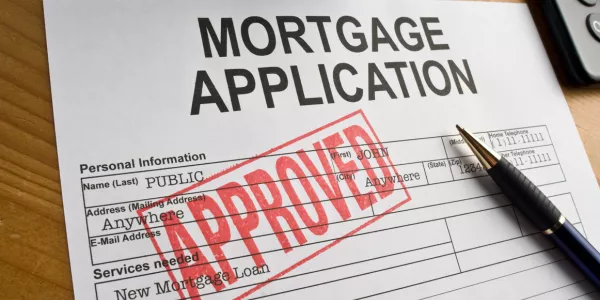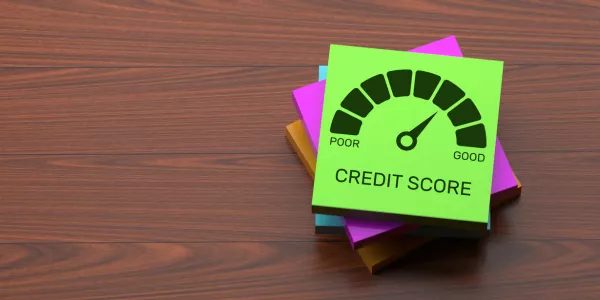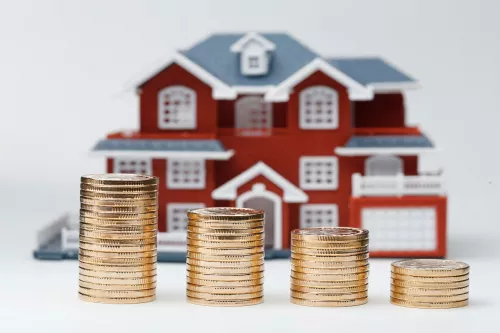A pivotal element in the journey of buying a house is securing a mortgage pre-approval if you don't have the money to pay for it upfront. This not only signals to sellers your financial readiness to buy a home but also offers clarity on your expected monthly payments and the costs at closing.
Here, we aim to clarify the concept of mortgage pre-approval, detailing its significance, the steps to obtain it, and how it stands in relation to other concepts like pre-qualification and the final loan approval. Knowing how to navigate the pre-approval process is essential for a smooth transition towards securing your home loan, helping you avoid potential pitfalls that could interfere with your home buying plans.
What Is Mortgage Pre-Approval?

Mortgage pre-approval serves as an initial evaluation by a lender of your financial capacity to obtain a home loan, where the lender outlines the amount they might offer you after reviewing your financial credentials, including your income, assets, debts, and credit history.
Although receiving a pre-approval letter does not assure you'll obtain financing for the home you aim to purchase, it plays a crucial role in the home-buying process. This letter, which reflects the lender's preliminary approval based on an examination of your finances, boosts your standing as a prospective buyer when you propose to buy a house.
The advantage of having a mortgage pre-approval is the credibility it lends you in the eyes of home sellers. The pre-approval letter you present indicates your serious intent and financial readiness, having started the loan process with a lender willing to back your purchase, thereby assuring sellers that you are not just casually browsing but are a committed buyer.
How To Get Preapproved For A Mortgage
Getting preapproved for a mortgage is a critical step in the home buying process, as it gives you a clear idea of how much you can afford and demonstrates to sellers that you are a serious buyer. Here’s a more detailed look into each step of obtaining a mortgage pre-approval:
1. Submission of Financial Information
To start the preapproval process, you'll need to provide your lender with a comprehensive set of financial documents. This includes:
- Tax Returns: Usually, lenders require the last two years of your federal tax returns to verify your income and consistency of earnings.
- Pay Stubs: Your recent pay stubs, often from the last few months, are needed to prove your current income.
- Bank Statements: Lenders will review your bank statements from the past few months to understand your spending habits, savings, and how you manage your cash flow.
- Proof of Assets: This includes statements for your savings accounts, investments, and any other assets that could contribute to your financial stability.
- Debt Information: Details about your current debts, such as credit card debt, student loans, car loans, and any other liabilities, are crucial. This helps lenders calculate your debt-to-income ratio, a key factor in determining your loan eligibility.
2. Credit Check
Your lender will perform a hard inquiry into your credit report to evaluate your credit history and credit score. This step is vital because your credit score significantly influences the interest rates you'll qualify for and can even affect the types of loans you're eligible for. The lender looks for any red flags, such as late payments, bankruptcies, or high credit card balances.
3. Loan Selection
With your financial information and credit score in hand, the lender can guide you toward the mortgage options that best fit your financial situation. This could include different types of loans, such as fixed-rate, adjustable-rate, or government-backed loans like FHA or VA loans, depending on what you qualify for and your preferences.
4. Pre-Approval Letter
Once the lender has assessed your financial standing and creditworthiness, and you've selected a suitable loan option, they will issue a pre-approval letter. This letter typically includes:
- The approved loan amount: The maximum amount you're eligible to borrow.
- The loan type: The specific mortgage product you're pre-approved for.
- The interest rate: A tentative interest rate you might expect (though it can change until locked in).
- Expiry date: Pre-approval letters are usually valid for 60 to 90 days.
This letter is your ticket to seriously engaging with real estate agents and sellers, showing them that you have the backing of a lender to proceed with a home purchase.
Important Considerations
- Accuracy and Honesty: Ensure all the information you provide is accurate and honest. Misrepresenting your financial situation can lead to issues later in the process.
- Pre-approval is Not a Guarantee: Remember, pre-approval is not the final loan approval. Changes in your financial situation, interest rates, or property appraisals can still impact the final loan offer.
- Shop Around: It’s wise to get pre-approval from a couple of lenders to compare the loan terms and interest rates offered to you.
Pre-Qualification vs. Pre-Approval
Pre-qualification is an initial, less formal evaluation based on self-reported financial information, offering a ballpark figure of how much you might be able to borrow. It doesn't require extensive financial documentation or a credit check, which means the estimated loan amount, type, and interest rate could change as more information becomes available.
Pre-approval, conversely, is a more in-depth and formal process that provides a clearer picture of your actual borrowing capacity. This process involves submitting detailed financial documents, such as bank statements and pay stubs, and undergoing a thorough credit check.
The lender examines your credit score and debt obligations, offering a more definitive assessment of the loan amount, terms, and rates you qualify for.
Although some lenders might use the terms pre-qualification and pre-approval interchangeably, they represent different levels of scrutiny and assurance in the mortgage process. Pre-approvals are generally seen as more comprehensive and indicative of a buyer's creditworthiness and financial stability.
Both pre-qualification and pre-approval processes can typically be initiated online, providing convenience and a streamlined start to securing a mortgage.
Pre-Approval vs. Approval
It's important to recognize that pre-approval is not the culmination of the process; final loan approval is the ultimate "home base". This final stage is reached after you've selected a property, made an offer, and undergone a comprehensive evaluation by your lender.
This evaluation includes a detailed appraisal of the chosen property to confirm its value, a thorough inspection to ensure its condition, and a meticulous review of your financial circumstances. Additionally, a title report is obtained to verify that there are no outstanding liens or complications with past ownerships.
Once these steps are successfully completed and your application passes final vetting, your loan moves forward to the closing phase, marking the completion of your home-buying journey.
Timing Your Pre-Approval
Securing a mortgage pre-approval before embarking on your house-hunting journey is highly recommended. Not only does pre-approval clarify your financial capacity and establish a potential loan limit, but it also enhances your appeal to sellers, showing them you're a serious and qualified buyer.
Moreover, the pre-approval process can uncover any financial obstacles you may face, like excessive debt or a low credit score, allowing you to address these issues early on. With a typical validity of 60 to 90 days, a pre-approval gives you ample time to find the ideal home while providing a clear understanding of your finances.
What Is a Good Mortgage Credit Score?

Credit score standards differ by lender and the type of loan, yet for conventional mortgages, a minimum score of 620 is generally necessary.
Targeting a credit score of 740 or more is beneficial, as it can unlock advantages including lower down payments, improved interest rates, and decreased expenses on private mortgage insurance. Essentially, a higher credit score can significantly enhance the terms and overall affordability of your loan.
People also ask
Does Pre-Approval Guarantee a Mortgage?
Pre-approval does not guarantee final mortgage approval. Changes in your financial situation, negative findings during the property appraisal, and shifts in lending policy can all have an impact on final approval.
Can I make multiple pre-approval inquiries without affecting my credit score?
Multiple inquiries in a short period are typically treated as a single inquiry, reducing the impact on your credit score.
Can I apply for pre-approval from more than one lender?
Yes, it's often advisable to shop around to compare rates and terms from different lenders.

 Marcio Vasconcelos
Marcio Vasconcelos





